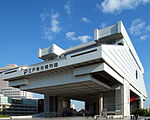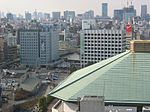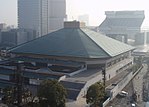The revenge of the forty-seven rōnin (四十七士, Shijūshichishi), also known as the Akō incident (赤穂事件, Akō jiken) or Akō vendetta, is a historical 18th-century event in Japan in which a band of rōnin (lordless samurai) avenged the death of their master. The incident has since become legendary. It is one of the three major adauchi vendetta incidents in Japan, alongside the Revenge of the Soga Brothers and the Igagoe vendetta.The story tells of a group of samurai who were left leaderless after their daimyō (feudal lord) Asano Naganori was compelled to perform seppuku (ritual suicide) for assaulting a powerful court official named Kira Yoshinaka. After waiting and planning for a year, the rōnin avenged their master's honor by killing Kira. They were then obliged to commit seppuku for the crime of murder. This true story was popularized in Japanese culture as emblematic of the loyalty, sacrifice, persistence, and honor that people should display in their daily lives. The popularity of the tale grew during the Meiji era, during which Japan underwent rapid modernization, and the legend became entrenched within discourses of national heritage and identity.
Fictionalized accounts of the tale of the forty-seven rōnin are known as Chūshingura. The story was popularized in numerous plays, including in the genres of bunraku and kabuki. Because of the censorship laws of the shogunate in the Genroku era, which forbade portrayal of current events, the names were changed. While the version given by the playwrights may have come to be accepted as historical fact by some, the first Chūshingura was written some 50 years after the event, and numerous historical records about the actual events that predate the Chūshingura survive.
The bakufu's censorship laws had relaxed somewhat 75 years after the events in question in the late 18th century when Japanologist Isaac Titsingh first recorded the story of the forty-seven rōnin as one of the significant events of the Genroku era. To this day, the story remains popular in Japan, and each year on 14 December, Sengakuji Temple, where Asano Naganori and the rōnin are buried, holds a festival commemorating the event.










